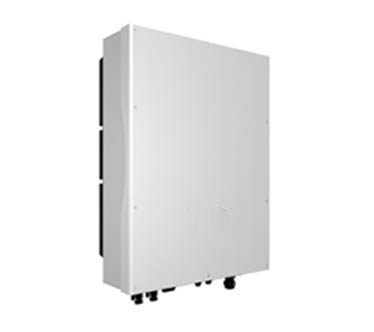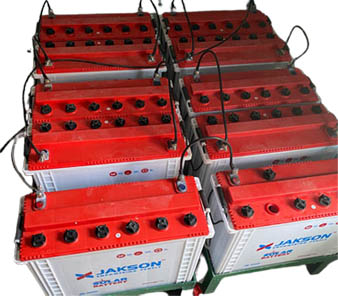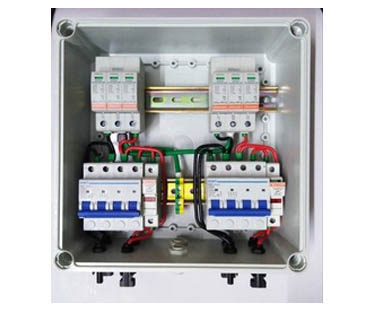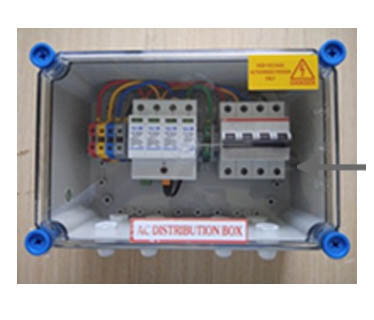Solar Power Plant
What is a Solar Power System?
A typical solar system consists of solar panels (which absorb sunlight), inverter (which converts DC into AC), mounting structure (that hold the panels in place), DCDB / ACDB (Protection devices), batteries (to store the extra power generated), grid box and balance of systems (wires, nuts etc.).
Solar Photovoltaic (PV) panels are generally fitted on the roof. For good power generation panels should face in South direction.
Solar PV panels on the roofs of Homes, Commercial and Industrial establishments generate clean electricity when Sun light hits them. This conversion takes place within the cells of solar panels which are specially fabricated, usually of silicon. Solar Power generally has no moving parts except the inverter which sometimes comes with a small cooling fan.
Solar panels are different from Solar Hot Water Systems, which are also mounted on household Roof-tops but use the heat from the Sun to provide hot water for uses.
Solar Power has evolved rapidly in recent years with PV Panels both improving in efficiency and coming down in price. Solar Power is now the cheapest electricity in the world. With quality panels consumer can look forward to 25 years or more free power and at the same time know they are making a substantial contribution in reducing greenhouse gases and global warming.
Main Components of Solar Power Plant:
1. Solar Panel
Solar Panels are semiconductor devices which generate electricity when exposed to sun light. In a SPV module a large number of such photovoltaic cells are connected in series. The electrons flow from one cell to the next through a conductor. In the next cell they are further struck by photons and acquire more potential energy and sweep out of the cell and so on. Finally, the electron leaves the last cell of the module and flow through the load. It is sunlight or irradiance, not heat, which produces electricity in photovoltaic cells.
Solar PV modules, also known as Solar Panels, are generally connected together in ‘Series’ to create a what is known as a Solar Array. The amount of solar energy generated depends on several factors, including the orientation and tilt angle of the solar panels, efficiency of the solar panel, plus any losses due to shading, dirt and even ambient temperature.

2. Inverter
Solar panels generate DC electricity which must be converted to alternating current (AC) electricity for use in our homes and businesses. This is the primarly the role of solar inverter. In a ‘string’ inverter system, the solar panels are linked together in series, and the DC electricity is brought to the inverter which converts the DC power to AC power.
In a micro inverter system, each panel has its own micro-inverter attached to the rear side of the panel. The panel still produces DC, but is converted to AC on the roof and is fed straight to the electrical switchboard.
There are also more advanced string inverter systems which use small power optimisers attached to back of each solar panel. Power optimisers are able to monitor and control each panel individually and ensure every panel is operating at maximum efficiency under all conditions.

3. Batteries
Hybrid grid-connected systems uses Hybrid (battery) inverters, and only require a battery large enough to supply energy for 1 to 4 hours (overnight) depending on the application. Batteries used for solar energy storage are available in two main types, lead-acid (AGM & Gel) and lithium-Ion. There are several other types available such as redox flow batteries and sodium-ion but Lead-acid and lithium-Ion are the most common. Most modern energy storage systems use rechargeable lithium-ion batteries and are available in many shapes and sizes which can be configured in several ways.

4. DCDB
Array Junction Box (AJB) also known as DCDB (Direct Current Distribution Box), a component of an electricity supply system which divides an electrical power feed into subsidiary circuits, while providing a protective fuse or circuit breaker for each circuit. DCDB controls the DC power from Solar Panels and by having necessary surge protection device (SPD) and fuses to protect the solar panels strings and solar inverter from any type of damage.

5. ACDB
The ACDB (Alternative Current Distribution Box) receives the AC power from the solar inverter and directs it to AC loads through the distribution board. ACDB includes a necessary surge protection device (SPD) and MCCB to protect the solar inverter from any type of damage or heavy voltage. Specifications of ACDB may change as per load or inverter capacity. ACDB provided at the cable terminating point emanating from Solar Inverter for interconnection control of dedicated electrical loads.

